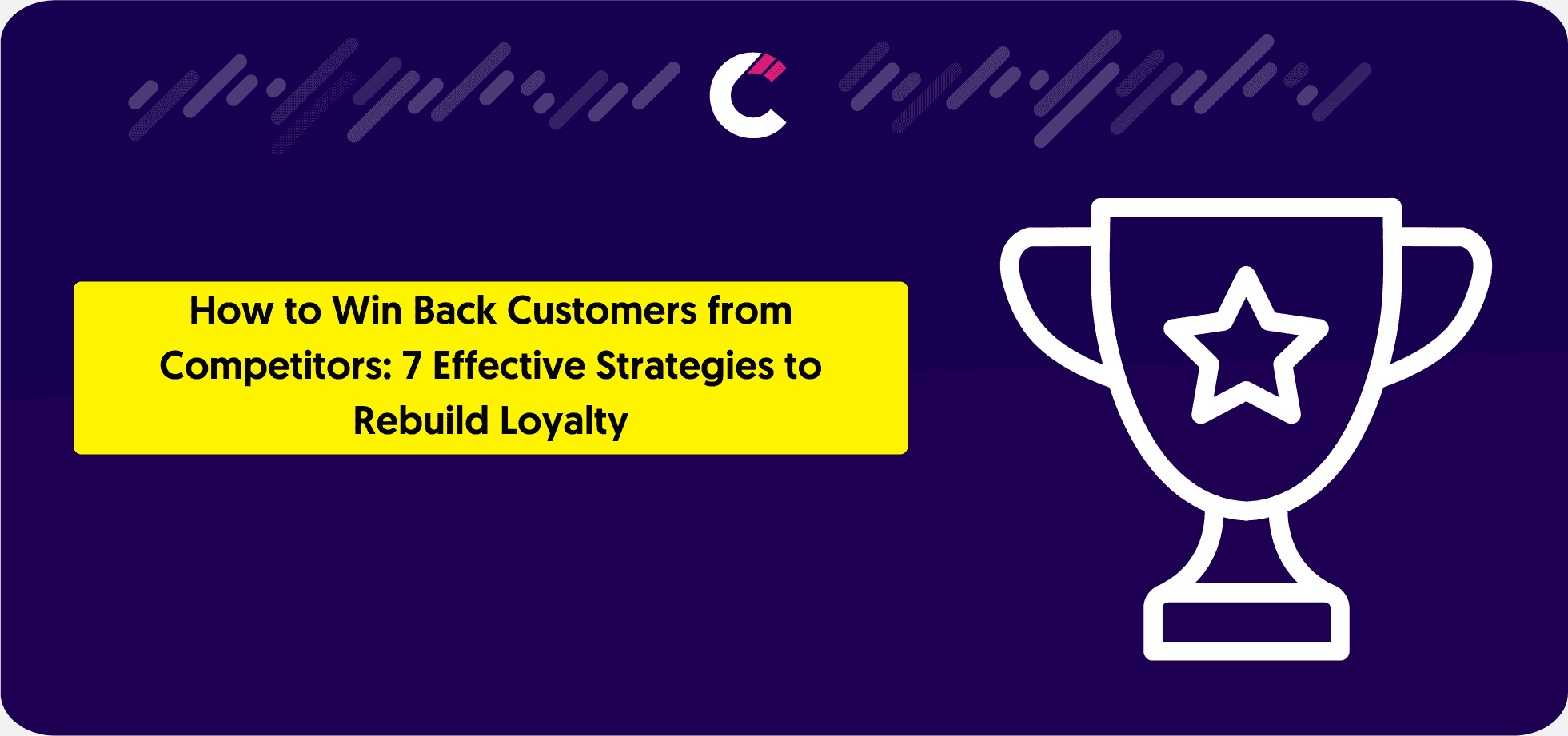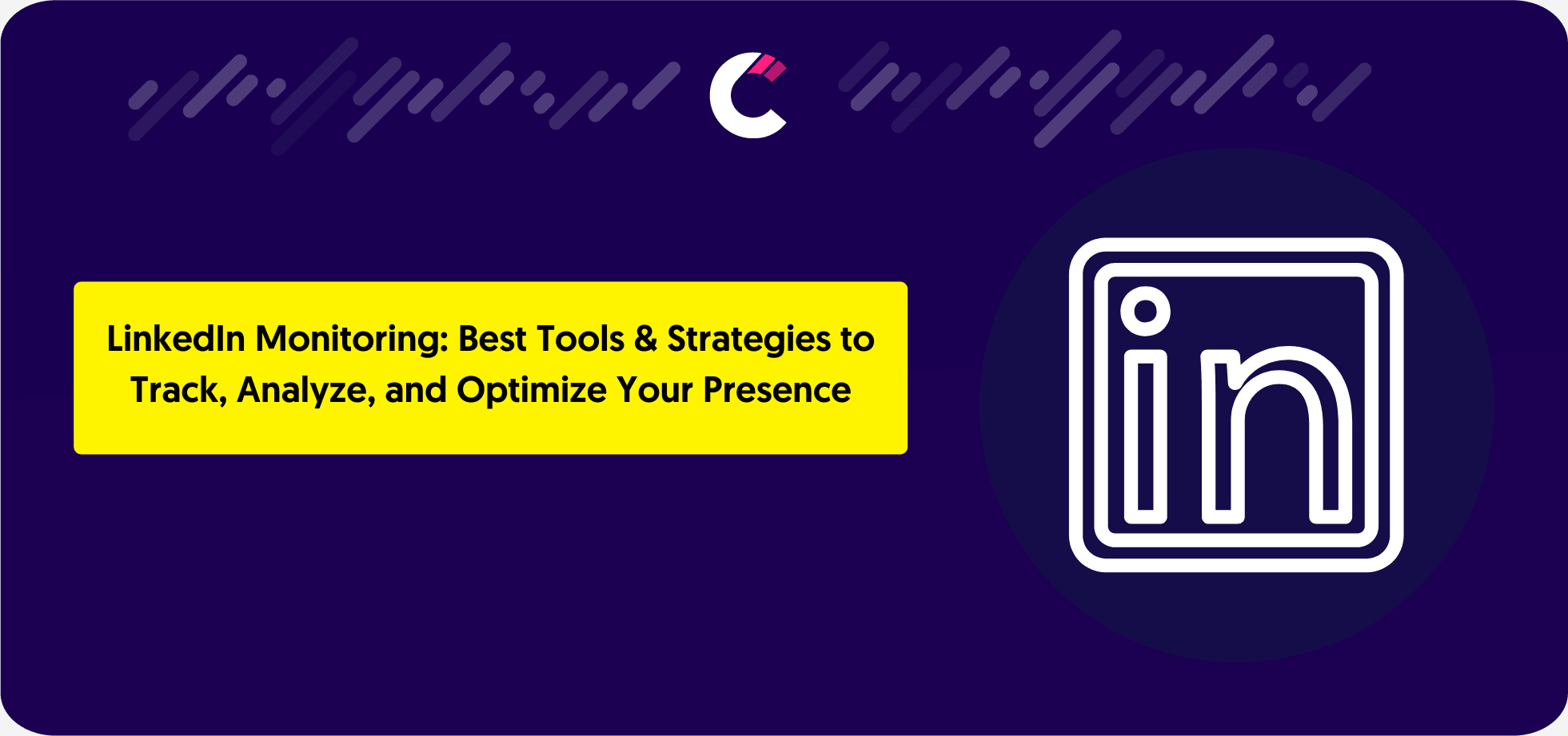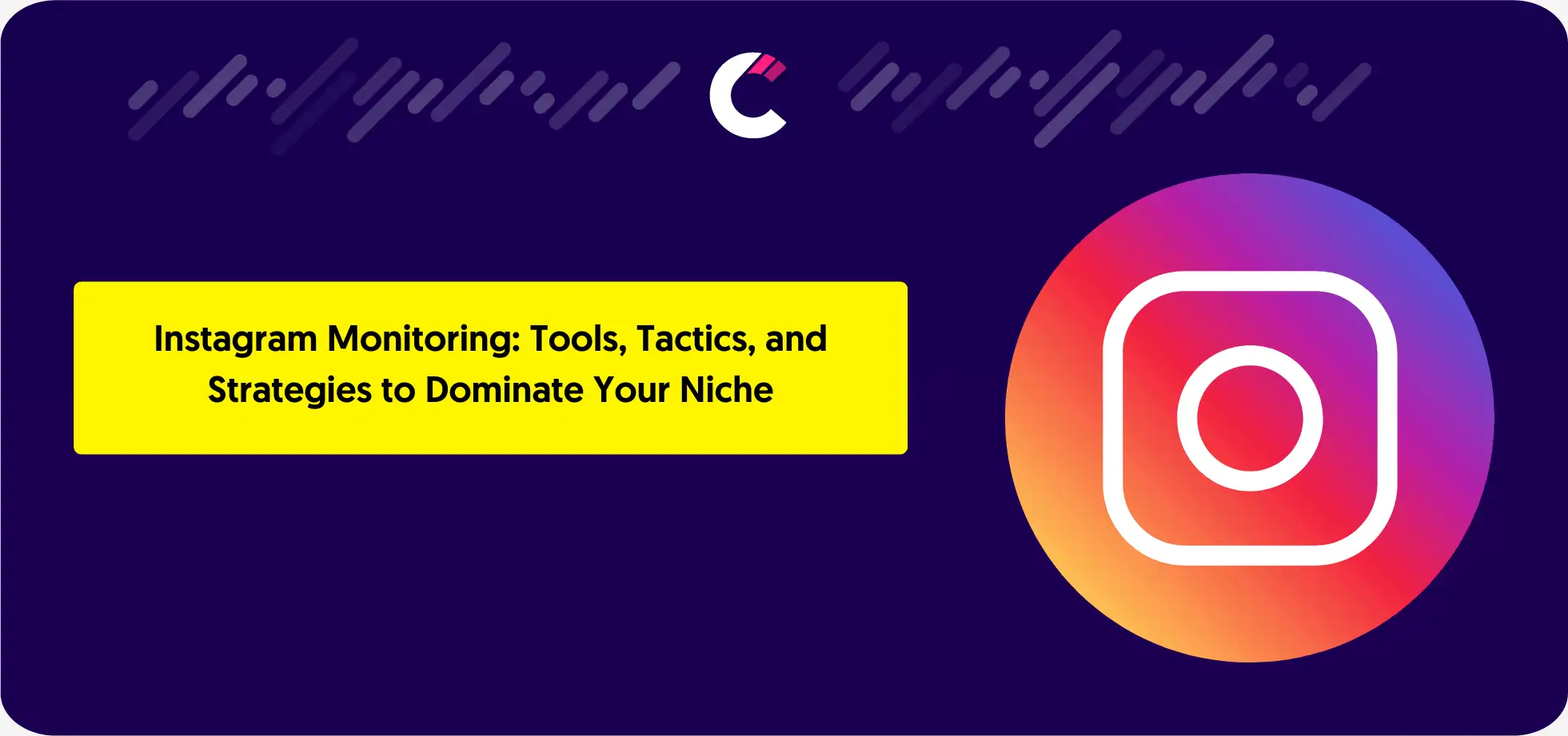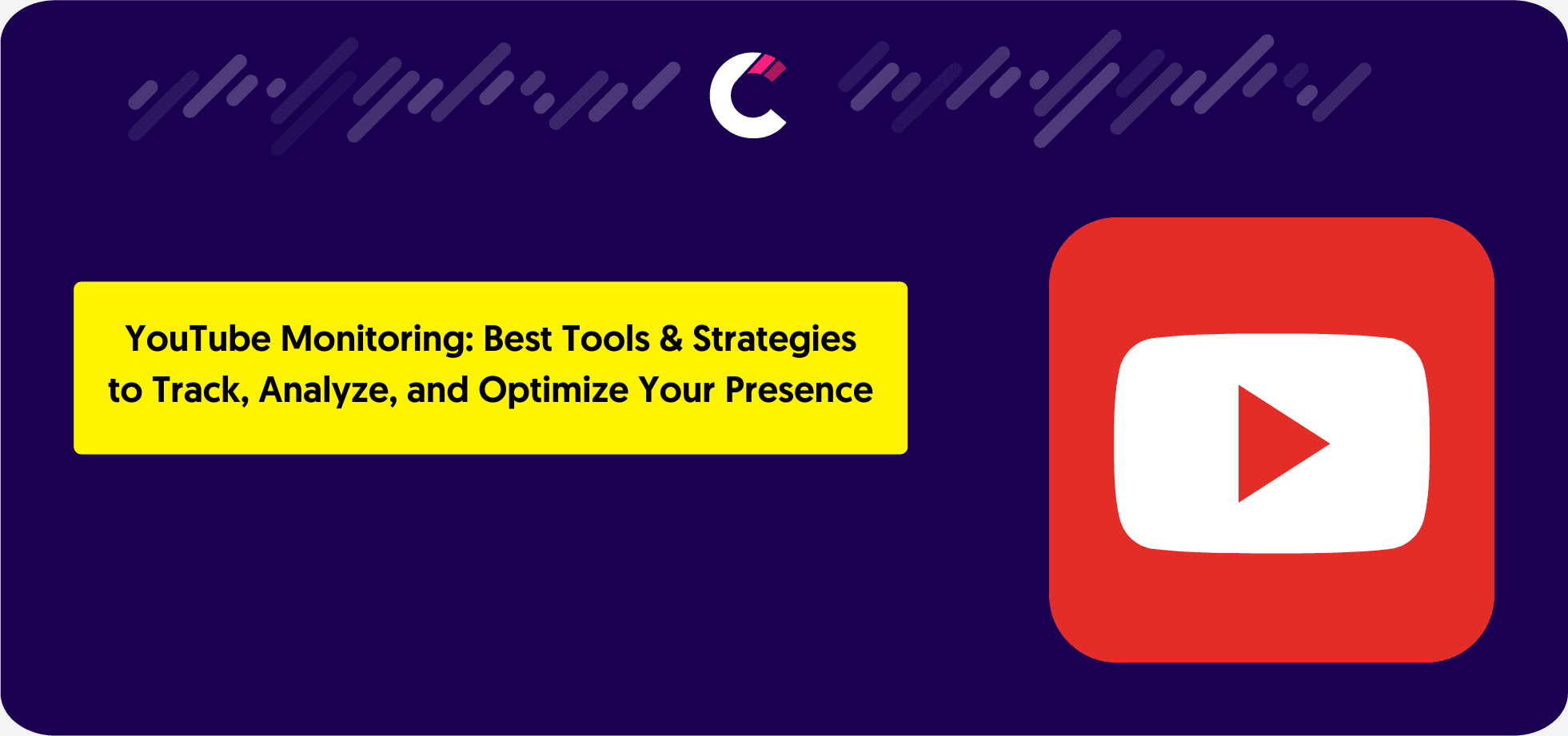Understanding the Power of a Customer Win Back Strategy
If you’re asking how to win back customers from competitors, it starts with understanding that it’s not just about getting them back, but showing them why your brand is the better choice now. People leave for various reasons, but with the right strategy, you can show them how things have improved.
Whether it’s new products, better service, or a stronger connection, a well-crafted win back plan can spark that interest again. It’s about making the return feel natural, not forced — and ultimately, building a lasting relationship.
Effective Customer Win Back Strategies: Proven Approaches That Work

When it comes to how to win back customers from competitors, having the right strategies in place is key.
Here are some proven approaches that can help you reconnect with lost customers and turn things around:
1. Leverage SEO and Content to Reconnect with Customers
SEO isn’t just for attracting new customers — it can help you win back customers as well. By creating valuable content that speaks to their pain points and showing how your brand has evolved, you can draw them back to your website.
For example, a company like Slack used targeted blog posts and SEO strategies to re-engage customers who had previously left for competitors. These blog posts highlighted new features, integrations, and improvements, successfully bringing back interest from their former users.
2. Solve Problems Before Customers Leave
One of the most effective ways to avoid losing customers in the first place is by identifying problems early. Setting up proactive support systems to detect and address issues before they escalate can stop customers from churning.
A great example here is Zappos, which is known for its excellent customer service. If a customer had an issue with an order, Zappos often reached out to them before they had to call, showing the customer that they care and preventing potential churn.
3. Reward Loyalty to Rebuild Trust
Loyalty programs aren’t just for new customers. If you’re winning back customers, offering exclusive perks, discounts, or rewards can incentivize them to return.
For instance, Starbucks uses its Rewards program to encourage repeat purchases. By offering discounts and exclusive member benefits, they were able to win back customers who had moved to other coffee chains. Personalizing these rewards based on past purchases or preferences can make them even more enticing.
4. Engage Lost Customers with Retargeting Ads
Retargeting ads are a powerful tool for reaching out to lost customers who have already shown interest in your brand. By showing them relevant ads on social media or across other websites, you can remind them of what they’re missing.
For example, Amazon often uses retargeting to bring back users who abandoned their shopping carts. These targeted ads remind customers of the products they left behind, leading them to return and complete their purchases.
5. Provide Value Through Education Rather Than Sales
Sometimes customers leave because they feel they didn’t fully understand the value your product offers. Instead of bombarding them with sales pitches, try educating them with helpful content.
For example, HubSpot offers a variety of free courses on inbound marketing, helping both potential and lost customers understand the value of using their platform. This educational approach has helped them rebuild relationships and demonstrate value without a hard sales pitch.
6. Highlight New Features or Products to Rekindle Interest
If you’ve made changes or added new features to your product, this is a great time to let your lost customers know. Highlighting these improvements — whether it’s a more user-friendly design, enhanced functionality, or a new product offering — can reignite interest and bring them back to see what they’ve been missing. Apple is a great example of this with their iPhone updates. Every new release includes major updates and new features that entice former iPhone users to return.
7. Use Timely Promotions to Encourage a Return
Sometimes a little incentive can go a long way in winning back customers. Crafting special promotions or offering time-limited discounts can create a sense of urgency, prompting customers to return before the deal expires.
For example, ASOS uses limited-time discount codes to bring back lapsed customers. Sending these offers through personalized emails or targeted ads can drive previous customers to return and take advantage of the offer.
Key Considerations Before Starting Your Win Back Journey
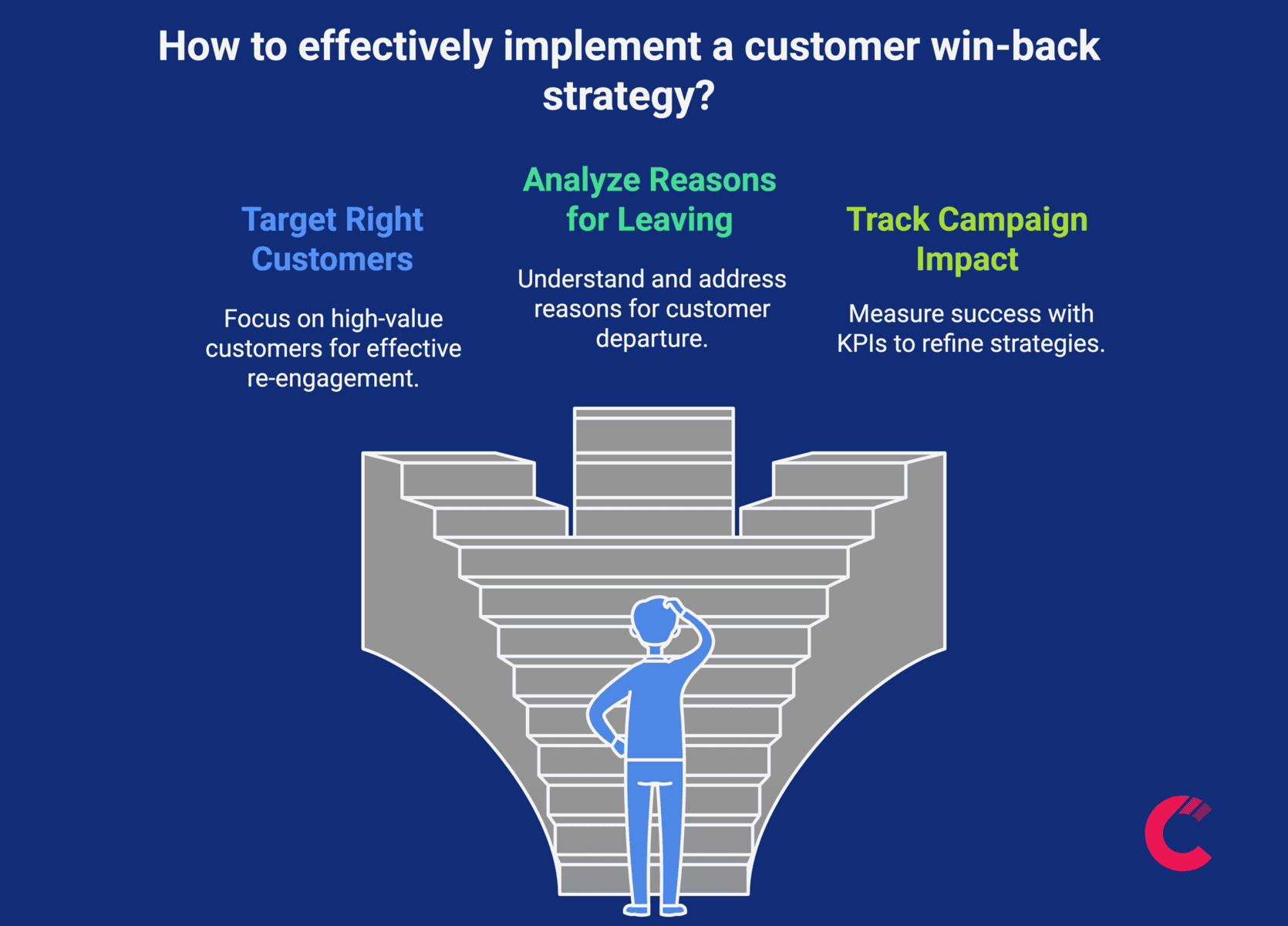
Before you dive into winning back customers, it’s important to lay the groundwork. You need to ensure that your win-back efforts are focused on the right customers, backed by solid data, and aligned with your broader marketing strategy.
Here are some key things to keep in mind as you set out on your journey to win back customers from competitors:
1. Target the Right Customers for Your Win Back Strategy
Not every customer who left is worth pursuing. To make your efforts more effective, it’s crucial to focus on the most valuable lost customers. These are the customers who were previously high spenders, had the potential for long-term loyalty, or simply showed strong engagement with your brand.
For example, if a customer abandoned your e-commerce store without completing a high-value purchase, they might be more worth targeting with personalized offers than a customer who made a one-time, low-value purchase. Segmenting your customer base will help you determine who should be at the top of your list for re-engagement.
2. Analyze Why Customers Left and Act on It
Understanding why customers left in the first place is essential for a successful win-back strategy. Was it due to poor customer service, unmet product needs, or a better offer from a competitor? Once you understand the reason, you can tailor your messaging to directly address it.
For example, if customers left because of slow response times from customer support, implementing an efficient ticketing system and highlighting that improvement in your win-back emails could make them feel more confident about returning. Addressing the root causes of churn is the best way to ensure you’re not just winning back customers, but keeping them long-term.
3. Tracking and Measuring the Impact of Your Win Back Campaign
You need a way to measure whether your win back efforts are paying off. Tracking key performance indicators (KPIs) like customer re-engagement rates, conversion rates, and revenue generated from win-back efforts will help you understand what’s working and what needs improvement.
For instance, if you’re running an email campaign to win back customers, analyzing open rates, click-through rates, and conversions will give you the insights you need to refine your approach. Regularly measuring success and optimizing based on data ensures that you’re making the most of your resources and maximizing your return on investment.
Strengthening Your Brand to Retain Customers Long-Term
Winning back customers is just the beginning. To ensure that they stay loyal, it’s important to strengthen your brand and build lasting relationships.
Here are two critical ways to retain customers long-term after you’ve won them back:
1. Build Long-Term Loyalty to Keep Customers Coming Back
Developing a culture of loyalty within your customer base is one of the best ways to ensure long-term retention. When customers feel valued and appreciated, they’re more likely to return.
For example, companies like Nike have built loyal communities through their rewards programs, where customers earn points not just for purchases but also for engaging with the brand.
Offering ongoing rewards, exclusive access, or early releases can make customers feel like they’re part of something bigger, reinforcing their connection to your brand.
2. Elevate Your Customer Service to Support Win Back Efforts
Customer service plays a huge role in retention. A positive experience during and after the win back process will go a long way in ensuring that the customer doesn’t leave again.
Companies like Ritz-Carlton are famous for their exceptional service, going above and beyond to ensure customer satisfaction.
A customer-first mentality, where your team actively listens to customer concerns and offers personalized solutions, will help you create an environment that encourages loyalty and trust, reducing the chances of customers turning to competitors again.
Using Data and Feedback to Refine Your Win Back Strategy
Data and customer feedback are powerful tools in refining your win-back efforts. By leveraging these insights, you can personalize your approach and ensure that your strategy resonates with customers.
Here are three ways to use data and feedback effectively:
1. Segment Customers Based on Their Churn Reasons
Understanding why customers left allows you to tailor your win-back strategy accordingly. Segment your lost customers based on churn reasons, whether it’s pricing, product dissatisfaction, or poor service.
For instance, if a group of customers left due to pricing concerns, you can target them with special offers or discounts that demonstrate how your product is now more affordable. Segmenting this way ensures that your messaging is relevant and specific to each group’s concerns.
2. Turn Customer Feedback Into Actionable Insights
Feedback is gold when it comes to improving your strategy. If customers are willing to share why they left, take it as an opportunity to act.
For example, if customers repeatedly mention slow delivery times, improving logistics and communicating the improvement directly to them can help rebuild trust. Implementing feedback loops where you consistently ask customers for their opinions and show them how you’re making changes will make them feel heard and valued, increasing the likelihood of their return.
3. Utilize Behavior Data to Personalize Your Approach
Customer behavior data, such as previous purchase patterns, browsing history, and interaction with past campaigns, can help you craft personalized messages that feel more relevant.
If a customer left after a particular product was out of stock, a personalized email notifying them when that item is back in stock can prompt them to return. Using behavior data allows you to engage lost customers with tailored messages that speak directly to their interests, making the win-back process feel more individualized and less generic.
FAQ: Your Questions on Winning Back Customers, Answered
1. What is the first step in winning back customers from competitors?
The first step in winning back customers from competitors is understanding why they left in the first place. Whether it’s poor service, unmet needs, or a better offer from a competitor, identifying the root cause of their churn will help you develop a targeted strategy. Once you understand the reason, you can craft a personalized approach that addresses their concerns and shows how your brand has improved.
2. How do I know which customers are worth trying to win back?
The most valuable lost customers to target are those who were previously high spenders, long-term loyal customers, or those who showed strong engagement with your brand. Segmenting your lost customers based on their lifetime value, purchase behavior, or overall engagement can help you prioritize who to focus on first. Customers who left because of a temporary issue or those with a high potential for return should be your primary focus.
3. What are some effective ways to retain customers long-term?
Building long-term customer loyalty starts with providing exceptional service, continuously engaging with customers through personalized experiences, and offering consistent value. Loyalty programs, reward systems, and ongoing customer education can also play a huge role in retention. Additionally, creating a customer-first culture where feedback is welcomed and acted upon helps ensure that customers feel valued and are more likely to stay with your brand.
4. How do retargeting ads work to win back customers?
Retargeting ads work by showing personalized ads to customers who have previously interacted with your brand but didn’t complete a purchase or action. For example, if a customer viewed a product on your website but didn’t buy it, retargeting ads will remind them of that product, often with a special offer or incentive. This tactic helps keep your brand top of mind and encourages customers to come back and complete their purchase.
5. How can I measure the success of my win back campaign?
To measure the success of your win-back campaign, track key performance indicators (KPIs) such as customer re-engagement rates, conversion rates, and the revenue generated from returning customers. Also, monitor metrics like email open rates, click-through rates, and customer feedback to refine your strategy. Regularly analyzing these data points allows you to continuously improve your win-back efforts and ensure you're seeing a positive return on investment.
